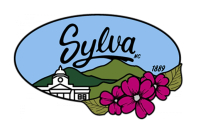Ivey named to Appalachian Leadership Institute
The Appalachian Regional Commission (ARC) named George Ivey, North Carolina Development Director for the Blue Ridge Parkway Foundation, to participate in the 2024-2025 class of the Appalachian Leadership Institute, a leadership training opportunity that equips Appalachian community leaders to use economic development as a tool to drive positive change.
Regional leaders discuss strategies for the Blue Ridge Parkway corridor
More than 130 leaders from North Carolina and Virginia gathered to discuss a strategic action plan for the entire Blue Ridge Parkway corridor during the Blue Ridge Rising Two-State Summit Dec. 5-6 in Blowing Rock.
Building a bridge of ideas and insight from the Smokies to Iceland
 By George Ivey • Contributing writer
By George Ivey • Contributing writer
What in the world would bring together the Great Smoky Mountains and the country of Iceland way up there in the cold waters of the North Atlantic?
Restoring earth before the end of the world
I have some good news. But first the bad news. The world is ending. Evangelist Harold Camping has predicted it. Others point to the Mayan calendar and confirm that our remaining days are few. Meanwhile, a surprising number of people believe that a planet called Nibiru will collide with Earth and do us in.
Most conservationists I encounter may not pay attention to these particular predictors of doom, but they tend to be equally pessimistic about our future. When I traveled to Indiana a few weeks ago to speak at a conference on literature and the environment, I heard countless examples of people wiping out nature, nature killing people, and nature sometimes destroying itself.
Session titles included such uplifting topics as “Dead and Dying Animals in Literature, Film, Art, and Culture,” and “Imagining Environmental Apocalypse.” More than once, professors at the conference lamented that their students find environmental issues extremely depressing. Really? I can’t imagine why.
Sure, we have plenty of reasons to be concerned about the outside world: loss of habitat, polluted waters, global climate change, invasive species, oil spills, funding cuts for conservation programs, species extinctions, and more.
But depressing news is, well, depressing. It repels people — and their donations, too. Very few people want to take on apparently losing causes, and so the challenges continue.
I know we have to be realistic about these conservation issues, but rather than focusing on what’s gone wrong, maybe we should spend more time tallying what’s gone right. Then, the next time we think we’re approaching an environmental Armageddon, we can share these encouraging stories with friends, family, struggling students, discouraged conservation leaders and potential donors — or just read them to ourselves to remember that good things have happened before and can happen again.
Fortunately, we can find plenty of recent conservation successes right here in Western North Carolina. Thanks to various groups and agencies, we again have elk in the Smokies, peregrine falcons in the skies, and river otters and various fish species back in the Pigeon River watershed.
Meanwhile, air quality is improving, and Haywood Waterways and its partners have cleaned up Hyatt Creek enough that it has been removed from the EPA’s list of polluted waters. Also, the 12 land trusts of the Blue Ridge Forever partnership have protected more than 50,000 acres of important farmland, forests, and natural areas in the last five years.
I don’t think we should worry that some favorable results will eliminate humanity’s interest in the environment. Instead, these success stories can inspire all of us to create more good news.
Speaking of which, Harold Camping has updated his timeline for the end of the world — previously scheduled for May 21. We now have until October 21 to create some new conservation successes. Who knows? Maybe we’ll do enough good between now and then to earn the world another short reprieve.
George Ivey is a Haywood County-based consultant and author of the novel Up River. Contact him at www.georgeivey.com.
What does Harvard know about milk, anyway?
You’ve probably seen the ads. Some famous face sports a white “milk mustache” and encourages you to drink more milk. Everyone from Shaquille O’Neal to Taylor Swift to Martha Stewart.
Celebrity endorsements might be enough to convince some people to add more dairy to their diet, but I’m guessing it took a lot more than that to get Harvard University thinking about cows. They didn’t settle for a glass or even a whole gallon. They recently bought a 6,000-head dairy operation in New Zealand for their $27 billion endowment fund.
As much as I love milk — on cereal, with dinner, and before bed, I have to wonder what Harvard was thinking. I’ve worked with several dairy farmers in Georgia and North Carolina. I’ve met a lot of hard-working people. I haven’t seen excessive wealth.
If running a dairy was really lucrative, more people would be doing it. The reality is quite the opposite, especially here in Western North Carolina, where the number of dairies has plummeted. In Haywood County, for instance, the number of dairies has dropped from 43 in 1992 to just nine today.
When I was growing up, they put pictures of missing children on the panels of the milk cartons. One friend half-joked to me that they should revive that practice, but use a picture of a dairy farmer to go with the old question “Have you seen me?”
It’s those same declines that make me want to invest in dairies, though not in the same way that Harvard has. Western North Carolina is still home to 70 dairy farms with around 5,000 dairy cattle yielding more than $19 million in annual cash receipts. That’s a lot of milk. It’s also a lot of jobs and a whole lot of land, including pastures, corn fields, and hay fields. In total, these dairy farms help maintain thousands of acres of land. These fields also provide wildlife habitat, help absorb heavy rains and floodwaters, and enhance the scenic views that draw millions of tourists to our mountains. In short, when dairies do well, we can all benefit.
Investing in these dairies isn’t easy, but we can all start by buying more milk and ice cream and other dairy products. Finding local milk can be a challenge, though. We’ve made great strides lately in labeling the origins of our produce, but most dairy products have not followed suit. Many local store brands do in fact contain milk from local dairies, but the labels rarely boast the fact. Other brands may have milk from Pennsylvania, California, or elsewhere. Maybe if enough people start asking, we will soon be able to identify — and buy — milk exclusively sourced from Appalachian dairies.
Until then, please go ahead and pour yourself a tall, cold, white one — every day if you can. Your actions will still help increase the demand for milk, and that will help dairy farmers and dairy farms all over. It doesn’t take someone from Harvard to see the value in that.
(George Ivey is a Haywood County-based consultant and author of the novel Up River. Contact him at www.georgeivey.com.)





